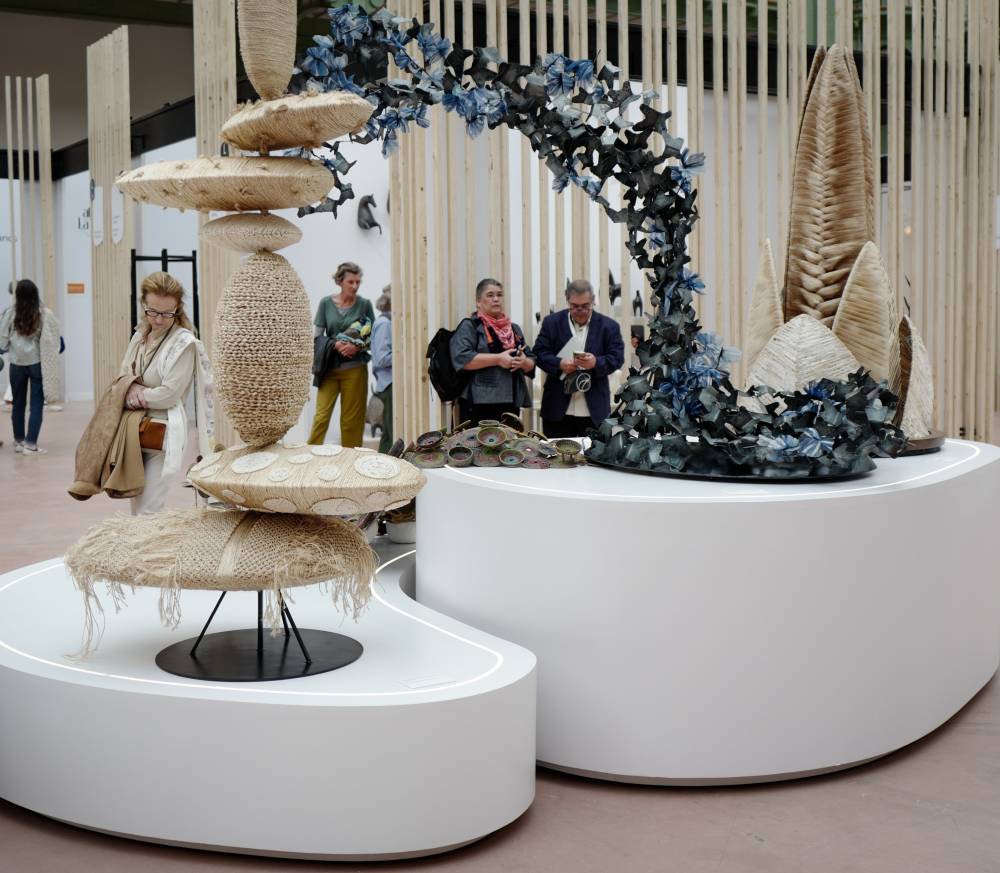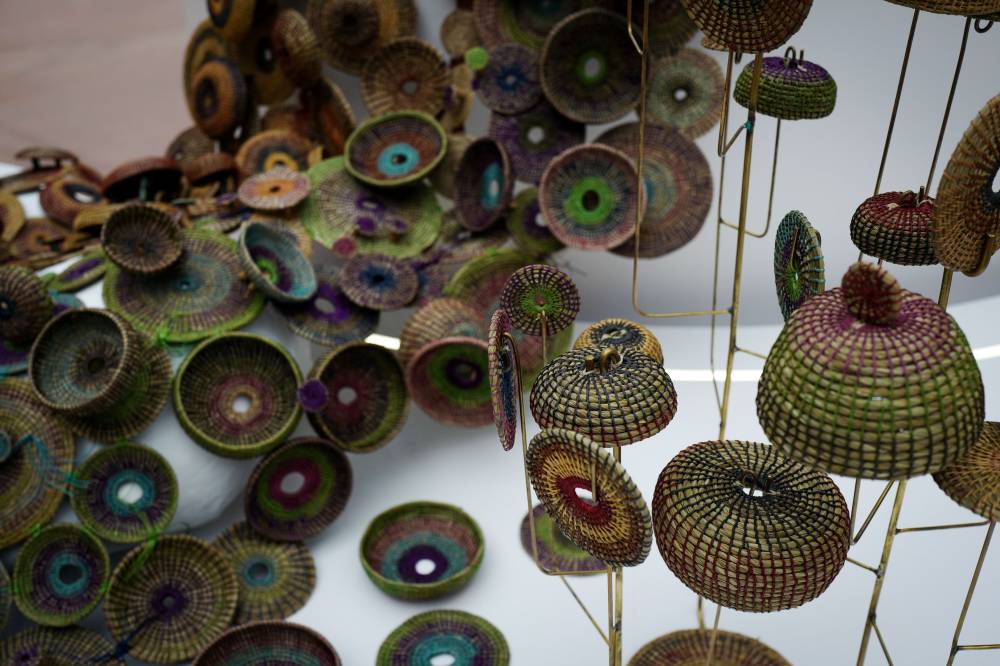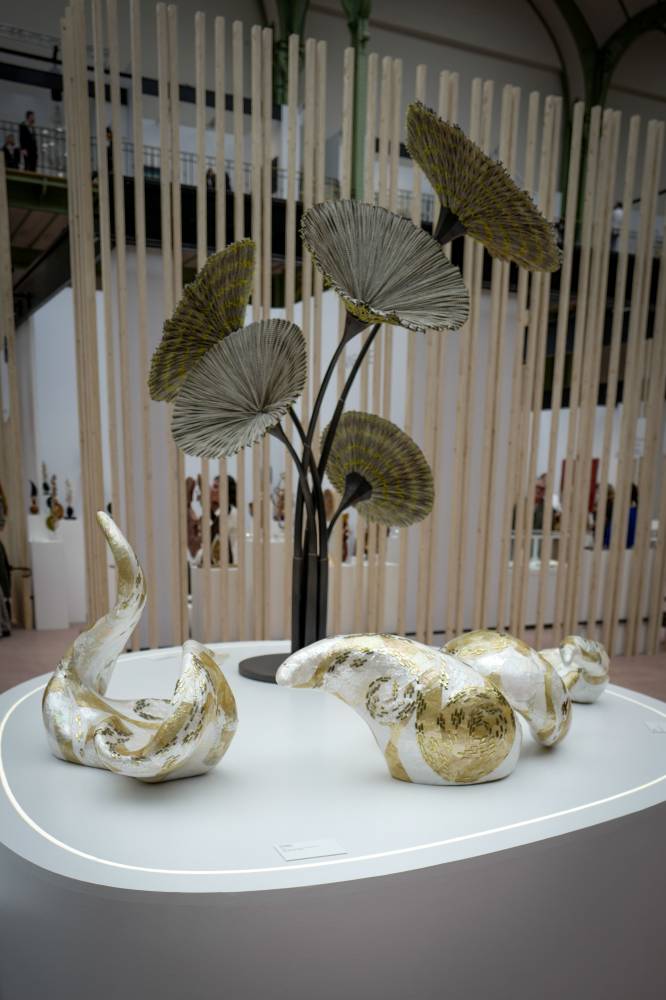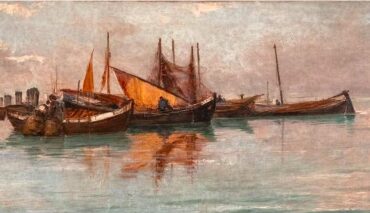Filipino craft redefines art’s boundaries in Paris

What happens when a handmade object created for utility or décor turns out to hold deeper meaning?
In studios and galleries around the world, seemingly simple crafts are shedding their humble origins and stepping into the spotlight as art—provoking viewers to reconsider where craft ends and art begins.
This is the idea behind “Révélations,” a biannual event spotlighting exceptional contemporary crafts from around the world. A vital hub for the creativity and skill of today’s finest artisans, it draws together creators, collectors, and anyone who appreciates extraordinary handmade work.
Held last week at the Grand Palais in Paris, France, “Révélations” featured “Le Banquet des Philippines” (The Banquet of the Philippines), a showcase of cutting-edge Filipino crafts presented by the Department of Trade and Industry (DTI)-Design Center of the Philippines and curated by designer Milo Naval.

The definition of craft has grown beyond its traditional, utilitarian roots. Today, it embraces technically innovative works that emphasize material exploration over function—highlighting the artistry and intensive processes behind their creation. This broader perspective includes not only functional and decorative items, but also experimental forms, nonfunctional pieces made using craft techniques, and even mass-produced works influenced by industrial design and fashion.
Collaborative process
The Philippines’ debut exhibit drew praise for its distinctly collaborative process. In a press statement, “Le Banquet” curator Romain Juilha said the Philippines was the only country at the seventh edition of “Révélations” whose works were created by multiple hands.
“It’s not only one artist,” he noted. “The objects are made by four hands, six hands—combining crafters, makers, and designers.”
He added that the Philippine presentation captured the essence of “Révélations,” while effectively showcasing the country’s mastery of fine craft, materiality, and the expertise of its grassroots communities.

Featured works were rooted in the Philippines’ heritage of natural fibers and metalwork, highlighting their evolution into contemporary studio craft. Artisans used abaca, silk, and raffia—materials central to the country’s weaving tradition and global abaca supply. Pieces drew from regional textile traditions such as inabel from Ilocos, t’nalak from the T’boli, and hablon from the Visayas.
Also on view were examples of Philippine metalcraft shaped by early smithing traditions. Interpreting the theme of “island,” six designers created one piece each, showcasing the technique of their medium while expressing personal and cultural memory through form.
Among the highlights was “Heart of Abaca,” a sculptural work by creative director Maricris Floirendo and her son Jaime Brias of Tadeco Home. Inspired by the abaca flower, the piece featured three ascending layers made from t’nalak, abaca fiber, and banana pulp sourced from their farm in Davao. The form suggested a transformation—from raw material to refined tradition—elevating indigenous weaving into contemporary studio art.
Olivia d’Aboville’s “Raffia Flowers,” created with Industria Edition, turned handwoven raffia polyester from Cebu into large, pleated, conic blooms. Set atop metalwork bases by Industria, the works explored the meeting of nature and design, reflecting D’Aboville’s continued exploration of the tension between organic and synthetic forms.

Cebuano accessories designer Neil Felipp took a more introspective approach, blending tradition with technology. His three-piece sculpture featured mother-of-pearl, white cabebe, and abalone shells set in brass, shaped with the precision of 3D technology. Drawing from Cebuano shell inlay traditions, Felipp’s abstraction of three animals facing away turned craft into emotional artifact.
Nature themes
“Hilaw, Laya (Unripe, Withered),” a collaboration between Leeroy New and Christina Gaston of Hacienda Crafts, explored the fragile tension between growth and decay. Discs and domes woven from cogon grass, wax thread, and bamboo beads—crafted by a women’s farming community in Cadiz, Negros Occidental—rested on a branching brass structure. The piece fused New’s sensibility with Gaston’s nature-driven design, using rural materials to reflect on life and labor cycles.
Jude Tiotuico’s “Kaleidoscope,” in partnership with D’Aboville and Rurungan sa Tubod Foundation, captured movement and fragility. Dozens of butterfly-like forms, hand-cut from steel to mimic the lightness of paper, were cloaked in shibori-dyed Philippine silk in deep indigo. The installation merged textile tradition and metalwork in a poetic installation on flight and flow of life.
Naval’s installation—a stack of discs and ellipses formed from his signature metalwork frames and wrapped in organic materials—was a quiet yet evocative anchor of the exhibition. It referenced the Philippine archipelago with its island-like forms, suggesting both fragmentation and unity.
Drawing deeply from his affinity with Bicol, the work incorporated intricate weaving and knotting done by a women’s community in Gubat, Sorsogon, along with shell accents and crochet elements produced by Shelmed, an artisanal export company specializing in abaca, buri, and raffia weaving, based in Daraga, Albay. Naval’s piece reflected the raw tactility of abaca and the labor behind its transformation—underscoring his shift from interior and furniture design to studio craft art.
“This project was a good opportunity for me to elaborate on the studio craft art that I do now,” he said, adding that he has recently begun exploring abstract painting.
Naval’s work, alongside other Filipino and international artisans, continues to redefine the boundaries between craft and art on the global stage.

















